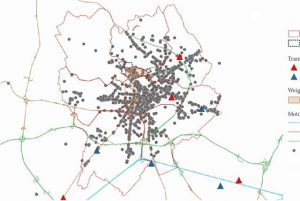A new paper by the University of Bergamo (I) proposes a framework that supports the collection and classification of information about the features of a city relevant to urban freight. The information is organized in a framework of 28 different layers that are then stored in a Geographic Information System (GIS) tool to enable efficient data retrieval and effective information graphical display.
The resulting GIS tool thus represents a decision support system for urban freight problems, providing decision makers and stakeholders with a wide range of easy to understand information aimed to support the identification and preliminary evaluation of urban freight solutions. Moreover, by providing a standardized set of features and sources of information, the framework enables the comparison of different cities.
Characteristics are morphology, population, land use, infrastructure, typology of commercial activities, logistics service and urban freight facilities available, access restrictions.
To illustrate the benefits, prototypical real-scale tests based on the framework have been realized in two mid-sized European cities: Bergamo (North of Italy) and Luxembourg. For both cities, data were mainly collected from publicly available sources and organized according to the framework. The data and information collected have been used in collaboration with the stakeholders in order to identify the priorities of intervention and evaluate alternative urban freight solutions.
The real-scale applications confirmed the usability and effectiveness of the framework in engaging stakeholders and support the process of envisioning shared urban freight solutions. The framework should be tested on additional cities, from small to large sized cities and with additional features such as construction logistics to validate its robustness and complete the list of city’s characteristics and potential sources.

